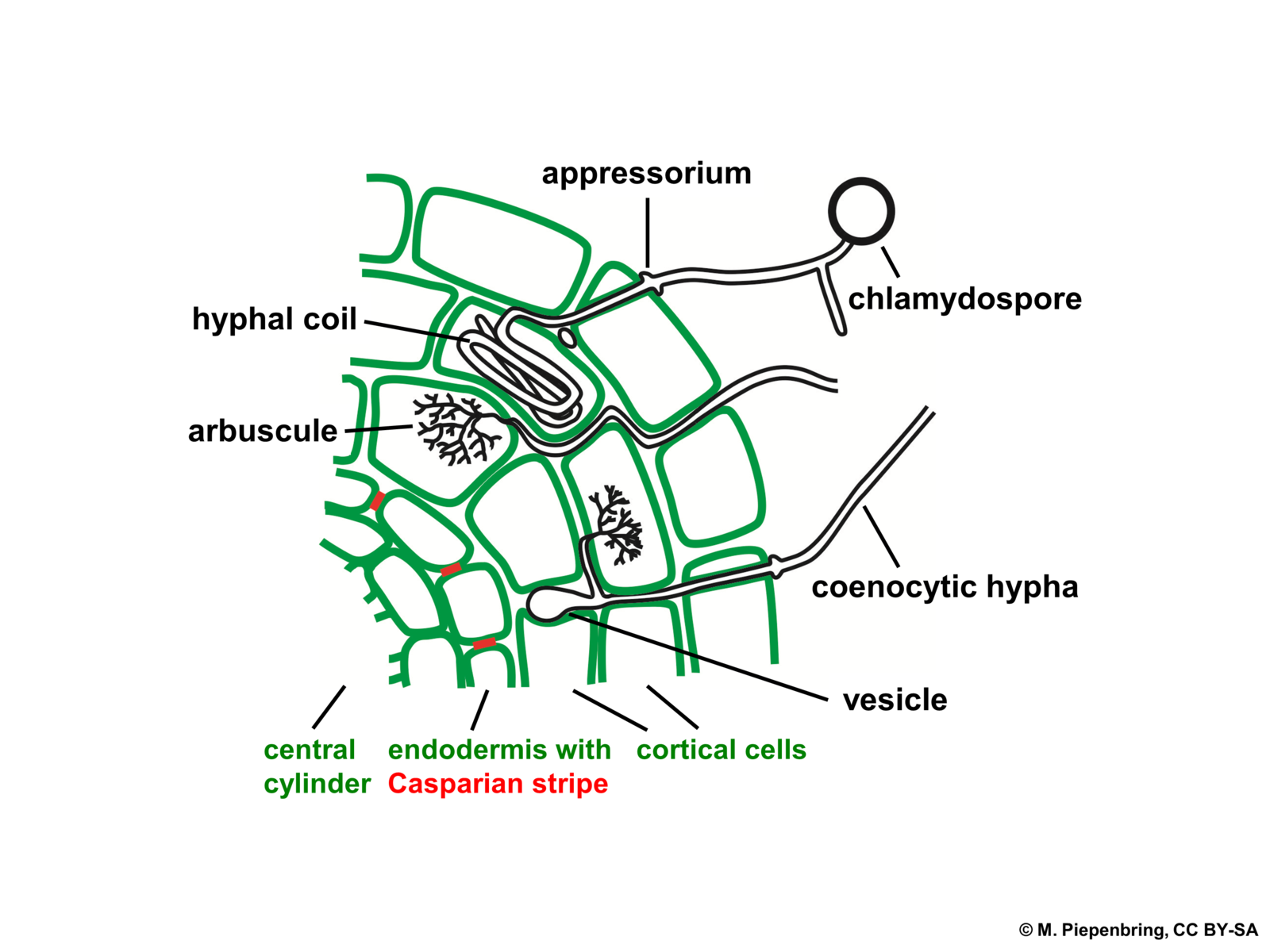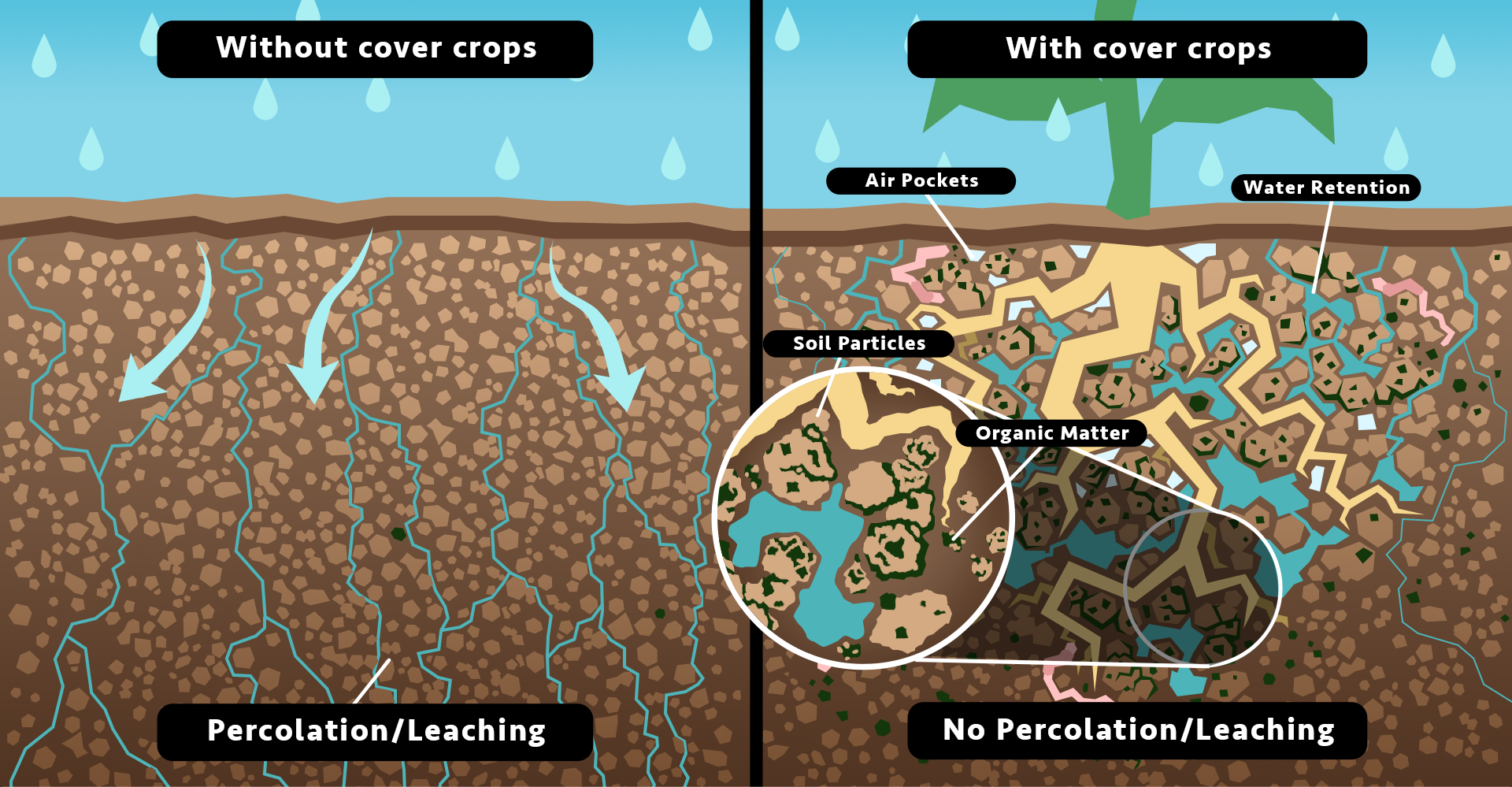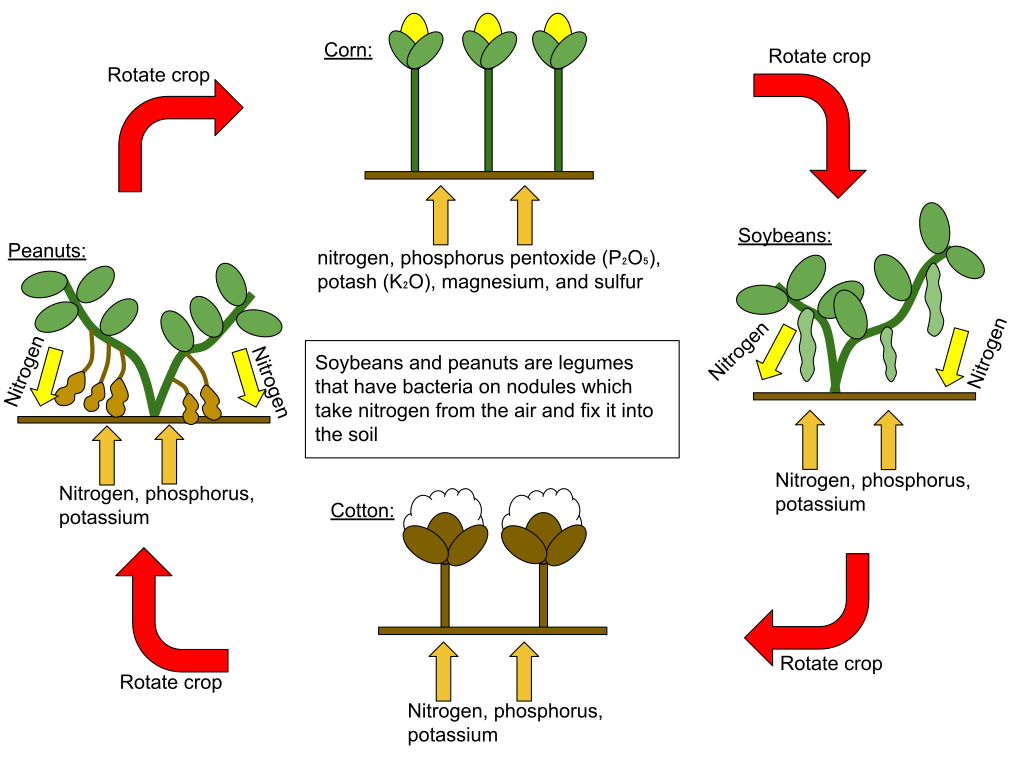IB Syllabus focus:
‘Enhance fertility via fallows, organic manures, composts, mycorrhizae, agroforestry, continuous cover. Conserve soils using terracing, contouring, windbreaks, cover crops, conditioners, crop rotation, reduced tillage and avoiding overgrazing or marginal land.’
Soil fertility and conservation are central to sustainable agriculture, ensuring long-term productivity while minimising environmental degradation. Strategies focus on maintaining nutrients, organic matter, and structural integrity.
Building Soil Fertility
Organic Inputs
Adding organic matter replenishes nutrients, improves soil structure, and boosts microbial activity. Key methods include:
Fallows: Resting land allows natural regeneration of vegetation and nutrient cycling.
Organic manures: Derived from animal waste, they supply essential nutrients and improve soil moisture retention.
Composts: Decomposed organic residues provide slow-release nutrients and enhance soil biodiversity.
Compost: A nutrient-rich material formed by controlled decomposition of organic matter such as food waste, crop residues, and garden trimmings.
Between these approaches, composting particularly enhances soil resilience by improving both chemical and biological properties.
Symbiotic Relationships
Mycorrhizae are fungi that form mutualistic associations with plant roots. They increase water and nutrient absorption, particularly phosphorus, while plants supply carbohydrates.
Mycorrhizae: Symbiotic fungi associated with plant roots, improving nutrient and water uptake while receiving sugars from the host plant.
Such partnerships boost soil fertility and reduce the need for synthetic fertilisers.

Diagram of an arbuscular mycorrhiza showing fungal hyphae integrated with plant roots, visualising how symbiosis increases nutrient (especially phosphorus) and water uptake. Labels identify key tissues and fungal structures at the root interface. Some anatomical labels exceed ESS SL depth but aid accurate understanding. Source.
Agroforestry
Agroforestry integrates trees with crops and/or livestock. Benefits include:
Leaf litter enriching organic matter.
Deeper roots recycling nutrients from subsoil.
Reduced erosion due to perennial vegetation.
This system builds soil fertility while supporting biodiversity and ecosystem services.
Continuous Cover
Maintaining continuous vegetative cover prevents erosion, enhances soil organic carbon, and sustains microbial populations. Grasses, legumes, or cover crops play critical roles in this strategy.

Side-by-side cross-sections compare soils without and with cover crops, labelling air pockets, organic matter, and water retention to show reduced percolation/leaching under continuous cover. The diagram also depicts nutrient and water pathways that underpin improved soil structure. Includes extra detail on leaching pathways beyond the minimum syllabus. Source.
Conserving Soils
Physical Measures
Physical conservation methods stabilise soils, prevent erosion, and reduce nutrient losses. Examples include:
Terracing: Creating step-like levels on slopes to slow water runoff.
Contouring: Ploughing along natural land contours to reduce erosion risk.
Windbreaks: Rows of trees or shrubs that minimise wind erosion.
These measures are particularly effective in areas with steep gradients or high wind exposure.
Biological Approaches
Cover crops and vegetation protect soil from direct rainfall impact and improve organic content. Their root systems also stabilise soil particles.
Cover crops: Plants grown primarily to protect and enrich the soil rather than for direct harvest.
Including legumes as cover crops introduces nitrogen through biological fixation, directly boosting fertility.
Chemical and Management Practices
Soil conditioners (e.g., lime, gypsum) improve soil structure, pH balance, and nutrient availability. Management practices like crop rotation enhance soil health by alternating species, breaking pest cycles, and diversifying nutrient demands.

Simple four-field rotation diagram highlighting the role of legumes in replenishing soil nitrogen and protecting fertility over time. The schematic reinforces alternation of crop functional types to break pest cycles and balance nutrient drawdown. Example crops shown are illustrative rather than prescriptive. Source.
Reduced tillage lowers disturbance, protects soil structure, and preserves soil organic carbon.
Avoiding Soil Degradation
Overgrazing
Excessive grazing by livestock compacts soil, reduces vegetation cover, and increases erosion risks. Controlled grazing systems maintain soil structure and plant regeneration.
Marginal Land
Cultivation on fragile or unsuitable soils often accelerates degradation. Sustainable land-use planning requires avoiding such areas for intensive agriculture.
Processes at Work
Inputs and Enhancements
Fertility-building inputs contribute to long-term soil productivity:
Litter and organic matter decomposition enrich soil.
Biological symbioses (e.g., mycorrhizae, nitrogen-fixing bacteria) sustain nutrient cycling.
Transfers and Flows
Conservation techniques control transfers such as infiltration, percolation, and erosion. By regulating these processes, soils retain fertility and remain structurally stable.
Transformations
Biological transformations like decomposition, humification, and nutrient cycling drive soil fertility. Conservation ensures these transformations occur effectively without net nutrient loss.
Balancing Fertility and Conservation
To sustain agricultural productivity, practices must both build soil fertility and conserve soil integrity. Fertility inputs without conservation risk erosion, while conservation without fertility management may lead to nutrient depletion. Integrating these approaches creates resilient and sustainable soils.
FAQ
Agroforestry systems not only recycle nutrients from deep soil layers but also create microclimates that reduce soil temperature fluctuations and moisture loss.
Trees provide shade, which slows decomposition and maintains soil organic carbon. Their roots stabilise soils, reducing erosion, while leaf litter layers protect soil from heavy rainfall impact.
Fallows allow natural processes to restore soil fertility when land is left uncultivated for a period. Vegetation growth returns organic matter to the soil, enhancing nutrient cycling.
In low-input systems, fallows provide a sustainable method of fertility management. However, increasing population pressures and land scarcity often limit their use today.
Soil conditioners alter the physical and chemical properties of soils to make them more productive.
Lime reduces acidity, increasing nutrient availability.
Gypsum improves soil structure and reduces salinity.
Organic conditioners, like biochar, increase water retention and microbial activity.
Reduced tillage limits soil disturbance, protecting aggregates and reducing erosion risks. It helps maintain soil organic matter and microbial communities that support fertility.
This practice also reduces carbon release, making soils more effective long-term carbon sinks.
Cover crops require additional seed, labour, and management, which may increase short-term costs for farmers.
In mechanised systems, planting and removing cover crops can interfere with crop cycles. Water demand from cover crops can also create competition in regions with limited rainfall.
Practice Questions
Question 1 (2 marks)
State two methods by which farmers can build soil fertility without using synthetic fertilisers.
Mark scheme:
1 mark for each correct method, up to 2 marks.
Acceptable answers include:Use of organic manures.
Application of composts.
Use of fallows.
Inclusion of mycorrhizae.
Agroforestry.
Maintaining continuous cover.
Question 2 (5 marks)
Explain how crop rotation and cover crops contribute to both building soil fertility and conserving soils.
Mark scheme:
Up to 2 marks for describing how crop rotation contributes to fertility and conservation:
1 mark for stating that alternating crops (e.g., including legumes) restores nutrient balance or fixes nitrogen.
1 mark for recognising pest cycle disruption or reduced depletion of specific nutrients.
Up to 2 marks for describing how cover crops contribute:
1 mark for noting prevention of erosion and improved soil structure.
1 mark for highlighting addition of organic matter or improved water retention.
1 mark for linking either practice explicitly to long-term sustainability or reduced need for synthetic inputs.

